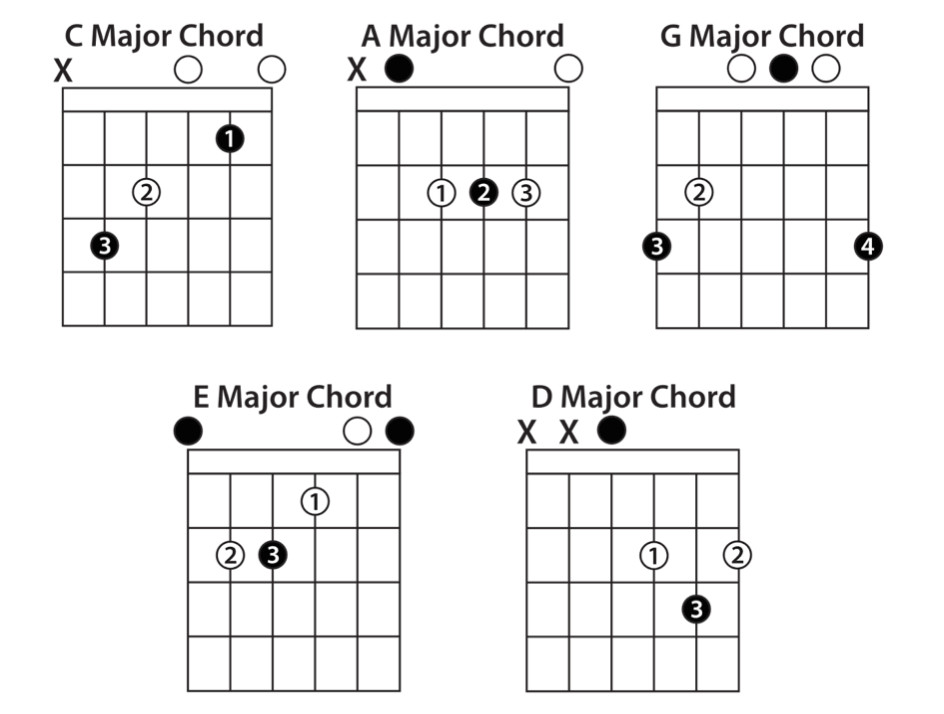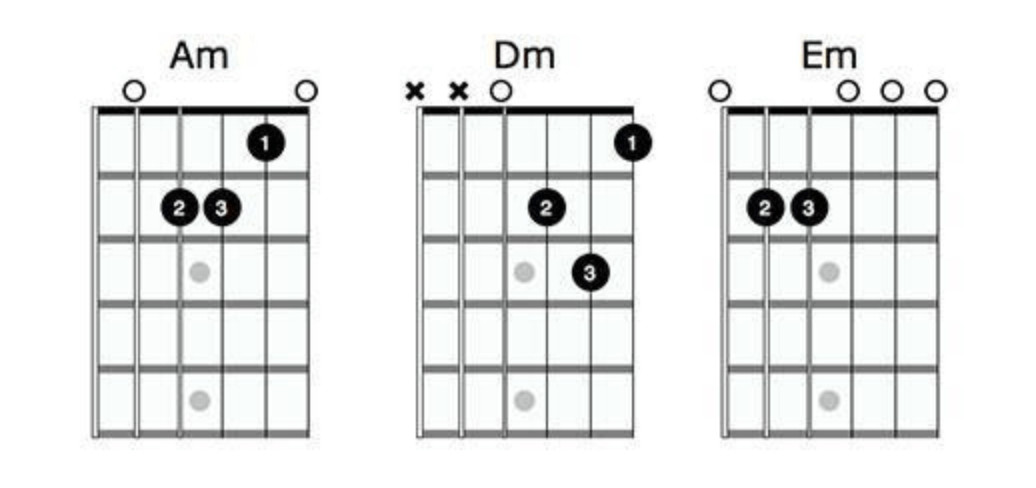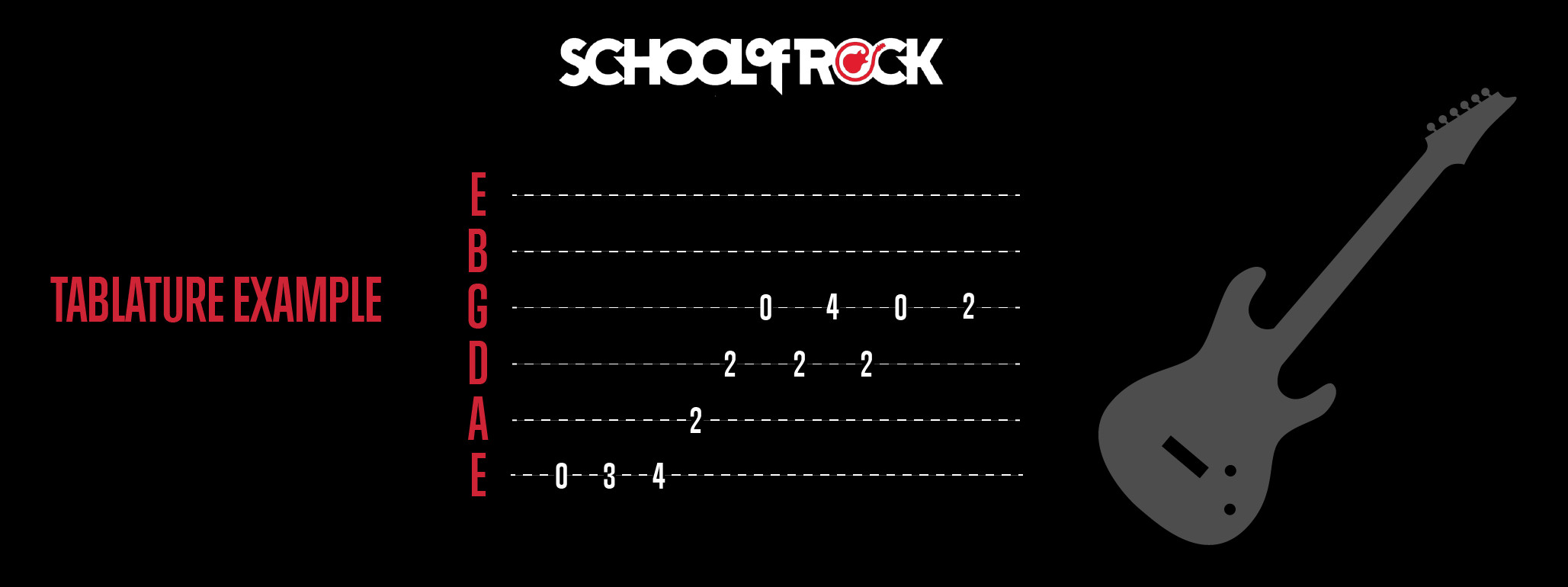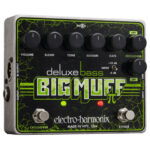Picking up a guitar for the first time is exciting, but the question quickly arises: “What do I play?” For most aspiring guitarists, learning chords is the fundamental starting point. But what exactly are chords? In music, chords provide harmony, adding depth and rhythm that makes songs feel complete. While instruments like drums and bass focus on beat and rhythm, most instruments, especially guitars, bring harmony through chords. Let’s dive into the world of Simple Guitar Chords perfect for beginners, explore helpful tips and tricks, and even discover songs you can start playing right away.
At institutions like School of Rock, the teaching philosophy revolves around practical application. Students immediately use what they learn in lessons to perform live. They learn the roles of both lead and rhythm guitarists. Lead guitarists typically focus on melodies, riffs, and solos, while rhythm guitarists are the backbone, playing chords and mastering techniques like strumming and fingerpicking. Regardless of your guitar aspirations, understanding chords is absolutely essential. If you’re in the market for your first guitar or considering an upgrade and feeling lost, check out this useful guitar-buying guide for valuable advice.
Essential Guitar Chords for Beginners
Learning guitar chords can feel daunting initially. There are many types of chords and different ways to play them. However, for beginners, focusing on a few key types makes the learning process much smoother. Let’s break down three fundamental chord categories.
Power Chords: The Rock Guitarist’s Best Friend
Power chords are often among the first chords taught at places like School of Rock, and for good reason. They’re incredibly popular in rock, and also find their place in classical and contemporary music. Power chords are known for their simplicity. They typically involve just two or three strings and frets, making them physically easier to play, especially for beginners. While versatile enough for any guitar type, they are most commonly associated with electric guitars. When played on an electric guitar, power chords can be amplified with distortion, adding significant depth and edge to the sound, perfectly capturing the mood of rock and heavier genres.
Open Chords: The Foundation of Countless Songs
Open chords are another excellent starting point for beginners. As the name suggests, these chords incorporate open strings – strings that are played without being fretted. Similar to power chords, open chords are relatively easy to play because they involve fewer frets and fingers. The key difference is that open chords utilize all six strings of the guitar. Your fretting hand (typically the left hand for right-handed players) doesn’t need to press down on every string. A common set of open chords is often referred to as CAGED, an acronym we’ll explore in more detail shortly, along with instructions on how to play each chord.
Barre Chords: Unlock Chord Versatility
Barre chords are a step up in complexity from power and open chords, and can initially feel more challenging. However, they are exceptionally useful as you progress. Once you master the technique, you can shift the entire chord shape up and down the guitar neck to create a wide range of new chords. In this sense, barre chords can make chord transitions quicker because you maintain the same hand shape, simply moving it to a new fret position. The initial difficulty for beginners lies in the technique itself. Barre chords often require one, or sometimes two, fingers to press down multiple strings at the same fret simultaneously, creating a “barre.” We’ll delve into barre chords in more detail in future discussions.
Mastering Open Guitar Chords: CAGED and Beyond
Before diving into specific open chords, tuning your guitar is crucial. A properly tuned guitar ensures that the notes you play will be in key and sound correct. If you’re struggling with tuning, School of Rock offers a helpful guide: Beginner’s Guide to Tuning a Guitar.
 Open Guitar Chords for Beginners
Open Guitar Chords for Beginners
Now, let’s explore open chords, focusing on the CAGED system, a cornerstone of the School of Rock’s performance-based teaching method. The acronym CAGED represents five common open major chord shapes: C, A, G, E, and D. Students in School of Rock programs frequently encounter these chords in the songs they learn and perform. The diagrams below illustrate each CAGED chord.
Understanding Chord Diagrams
Chord diagrams are visual representations that show you exactly how to play a chord. They indicate which strings to play, which frets to use, and which fingers to place on each fret. Diagrams are read horizontally. The top line represents the thickest string (low E), and the bottom line is the thinnest string (high E), mimicking the guitar held upright in front of you. An “x” above a string indicates a muted string, meaning it should not be played. An “o” or circle above a string signifies an open string, played without any fretting. Numbers on the diagram indicate finger placement: 1 = index finger, 2 = middle finger, 3 = ring finger, and 4 = pinky finger. The vertical columns represent frets, starting from the nut of the guitar (the first fret). For example, in the A Major chord diagram, the numbers are on the second fret. This means you’ll use your index finger on the second fret of the D string, your middle finger on the second fret of the G string, and your ring finger on the second fret of the B string.
 A Major Chord Diagram
A Major Chord Diagram
Beyond the CAGED chords, several other open chords are frequently used and are beginner-friendly. These are essential additions to your growing chord vocabulary.
 Additional Beginner Guitar Chords
Additional Beginner Guitar Chords
It’s important to distinguish chord diagrams from tablature (TAB). Tablature is another system used to read music for guitar, but it represents music differently. In tablature, the lines are read vertically, and they represent the guitar strings. The bottom line is the low E string, and the top line is the high E string – the opposite of chord diagrams. Numbers on the TAB lines indicate the fret to be played on that string. “0” represents an open string. So, while both diagrams are visual aids for guitarists, they convey information in distinct ways. Avoid confusing chord diagrams with TAB and vice versa.
 Guitar Tablature Example
Guitar Tablature Example
Chord diagrams are invaluable tools. They not only show you the finger positions for chords but also suggest efficient fingerings, making chord transitions smoother. With consistent practice, these chord shapes will become ingrained in your muscle memory, and you’ll rely less on the diagrams. As you learn these and other new chords, keep these essential tips in mind:
- Fret Close to the Fret Wire: On a guitar, frets are separated by thin metal bars (fret wires). Position your fingers just behind these wires, not directly on top of them or too far behind. Experiment to find the sweet spot, often in the middle of the fret space or slightly closer to the fret wire.
- Use Your Fingertips: Press down on the strings with your fingertips. This provides the cleanest and clearest sound. Keep your fingers arched, like the letter “C,” to avoid accidentally muting adjacent strings and ensure each note rings out clearly.
- Play Each String Individually: When learning a new chord, strum each string separately. This helps you identify if any strings are muted or buzzing. If a string doesn’t sound right, adjust your finger position until it rings clearly. This step is crucial for troubleshooting and developing good technique.
- Practice Fretting and Unfretting: Practice transitioning into and out of chords. Fret the chord, strum it, then release your fingers. Repeat this, gradually increasing speed. You can also practice hovering your fingers just above the frets in the chord shape, preparing for quick and accurate chord changes.
Songs to Play with Simple Guitar Chords
Now that you have a grasp of basic guitar chords, chord diagrams, and practice tips, let’s explore some popular songs that utilize these chords. Many well-known songs are built upon the CAGED chords and basic minor chords, making them excellent choices for beginner guitarists. Here are a few examples:
- “Sweet Home Alabama” by Lynyrd Skynyrd: A classic beginner song using only three chords: C, G, and D.
- “Bad Moon Rising” by Creedence Clearwater Revival: In the key of D, this song also relies on just three chords: G, D, and A.
- “Love Me Do” by The Beatles: This early Beatles hit is in the key of G and uses G, C, and D chords.
- “Eleanor Rigby” by The Beatles: In the key of Em (E minor), this song primarily uses C and variations of Em chords.
- “Time of Your Life” by Green Day: In the key of G, it uses G, C, Cadd9, and D5 power chords. For simplicity, you can substitute the D5 power chord with a regular D major chord, and it will sound very similar.
- “Island in the Sun” by Weezer: This song uses a four-chord progression throughout most of the song: Em, Am, D, and G. The bridge section incorporates power chords, offering a chance to practice both open and power chords.
- “Boulevard of Broken Dreams” by Green Day: In the key of Fm (F minor), this song uses Em, G, D, and A chords. Power chords are also featured towards the end, making it another great song for practicing both open and power chords.
More Songs for Beginning Guitarists:
- “Hey There Delilah” by Plain White T’s
- “Hallelujah” by Leonard Cohen
- “Redemption Song” by Bob Marley
- “Smoke on the Water” by Deep Purple
- “Stairway to Heaven” by Led Zeppelin
- “Hotel California” by Eagles” (While “Stairway to Heaven” and “Hotel California” are listed, note that parts of these songs are more advanced, but simplified chord versions exist for beginners.)
Exploring Power Chords Further
Power chords are often considered easier than open chords but share a similarity with barre chords in their movable nature. Let’s clarify this. Compared to open chords, power chords are simpler in terms of the number of notes, typically using fewer strings and frets. However, the underlying chord shapes can be conceptually linked. Consider an A major chord and an A5 power chord. The A major chord contains the notes A, C#, and E. The A5 power chord consists of A and E. The A major chord includes the root, third, and fifth intervals, while the A5 power chord focuses on the root, fifth, and octave (which is the same note as the root, but an octave higher). Essentially, they are related chords, with the power chord omitting the third. This omission is significant because the third determines whether a chord is major or minor. Since power chords lack a third, they are neither major nor minor, making them versatile and usable in place of both major and minor chords in many musical contexts. Experiment by playing an open chord and its corresponding power chord to hear the sonic difference.
Compared to barre chords, power chords are easier to execute initially, but they can be seen as a stepping stone. Power chords can be played in various ways, including a three-string version that utilizes a “barre” technique. The barre technique involves using one finger to press down multiple strings at the same fret. Practicing two-string barre chords within power chord shapes is an excellent way to develop the finger strength and dexterity needed for full barre chords later on.
What musical styles are ideal for power chords? Classic rock and much of modern pop music heavily feature power chords. In School of Rock’s Rock 101 program, beginner guitarists are introduced to power chords specifically for playing rock music. Here are some example songs you can use to practice:
- “Wild Thing” by The Troggs: Primarily uses A5, D5, and E5 power chords, with occasional G5 power chords.
- “Let It Be” by The Beatles: This song can be played with either open chords (C, G, Am, F) or power chords. Using the C5, G5, and F5 power chords provides a rock-oriented alternative.
- “Rock and Roll” by Led Zeppelin: A power chord anthem using A5, D5, and E5.
- “I Love Rock and Roll” by Joan Jett & The Blackhearts: Features E5, A5, and B5 power chords.
- “When I Come Around” by Green Day: This entire song is built on power chords: F#5, C#5, D#5, and B5.
- “Rockin’ in the Free World” by Neil Young: Begins with power chords (E5, D5, C5) and then transitions into a mix of power chords and their open chord counterparts (Em, D, C).
 More Beginner Guitar Chords
More Beginner Guitar Chords
Now that we’ve covered simple guitar chords and songs to play, are you ready to put your knowledge into practice? Perhaps you’re looking for further guidance? School of Rock is here to help! SoR offers private music lessons and various music programs designed to set you on the path to guitar success. Programs like Rock 101 and the Performance Program bridge the gap between private lessons and real-world performance, enabling beginners and intermediate players to learn full songs and perform as part of a band. Through these programs and lessons, students develop musical talent, life skills, teamwork abilities, and gain invaluable experience. The songs mentioned in this article are often part of these programs, helping students master open and power chords while also developing their understanding of music theory. If you’re interested in learning more, contact your nearest School of Rock location to explore the opportunities available.
About the Author:
Miranda Morales is a dedicated guitar and keyboard instructor at School of Rock Easton in Pennsylvania, sharing her passion and expertise with aspiring musicians.

